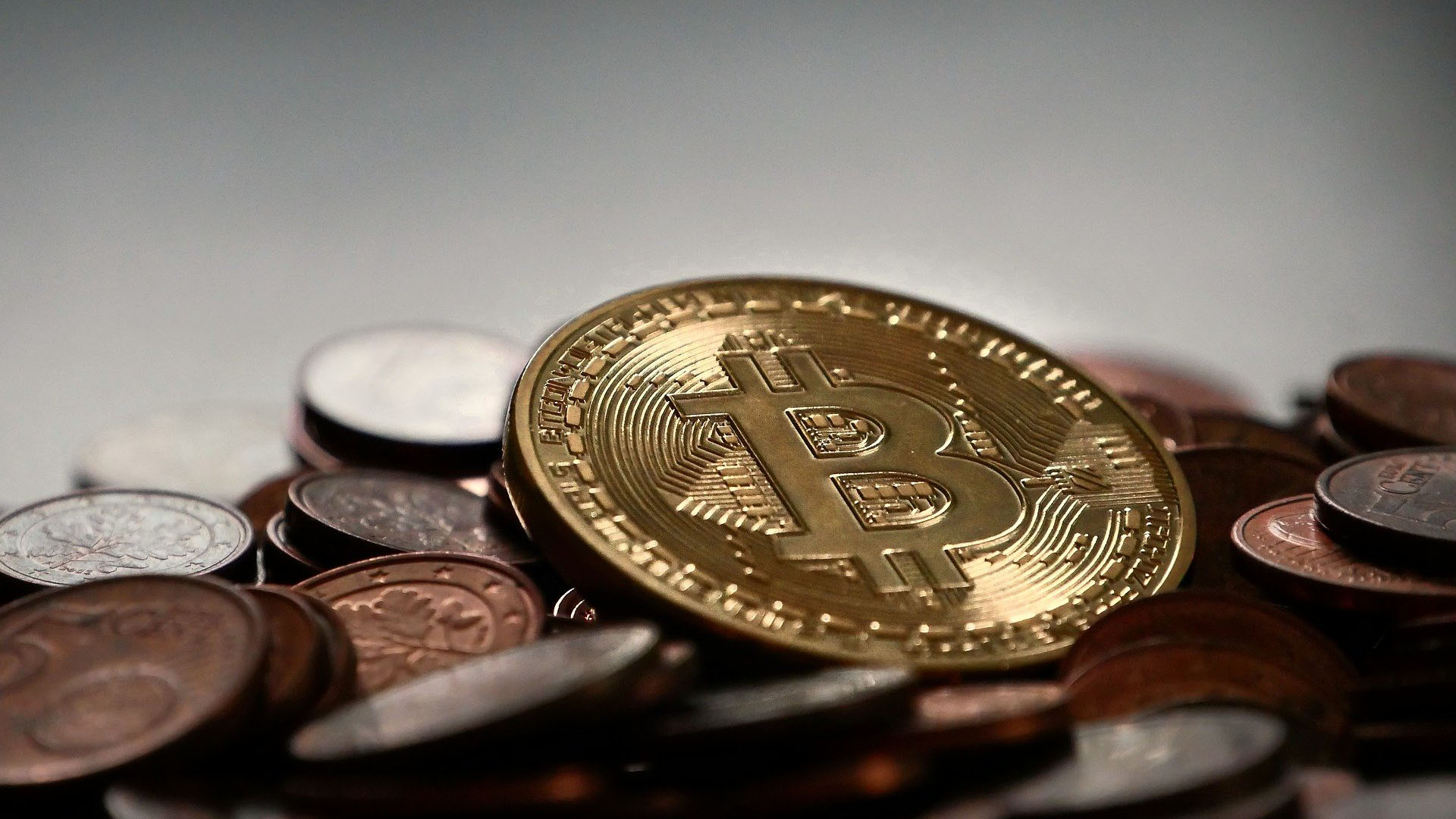Crypto art's glorified Steam marketplace won't save digital art
Never mind the ecological impact: NFTs aren't even good at what they set out to do.

If you've been online in the last few weeks, you'll have doubtless come across the crypto art craze. Seemingly too-good-to-be-true, the technology hopes to revolutionise digital art by solving all of its problems—from piracy and ownership protection to providing a direct way for artists to make money off their work. With major players like the NBA and Twitter's Jack Dorsey getting involved, this has to be the real deal. Right?
Unfortunately those promises are nothing but smoke and mirrors to hide the same old deep-seated problems behind so much of blockchain technology.
First, we're gonna need an explainer. NFTs (or Non-Fungible Tokens) are, effectively, a form of cryptocurrency token tied to an image (or sound, or any other attachable file) instead of a coin, and stored in a blockchain. Unlike Bitcoin, which is 'fungible' (ie, each coin is identical and interchangeable), NFTs are unique—a one-of-a-kind of digital trading card that is treated as its own, standalone entity on the blockchain. These are 'minted' by its creators paying to have them added to the next 'block' in the chain, and can be traded using cryptocurrencies, such as Ethereum.
Yes, the same Ethereum that's behind why you can't buy a graphics card at the moment.
It's easy, of course, to point to the ecological disaster of blockchain technology. Bitcoin's carbon footprint is well documented, with current estimates claiming mining activities consume more electricity than Argentina. This isn't new information, though. Others have better detailed the shocking environmental impact of making a single NFT transaction.
There is the always-just-over-the-horizon promise of a switch from the proof of work style of blockchain to a proof of stake model, and Ethereum 2.0 is promising such a thing. That would take the power-crazed demands of GPU mining out of the equation. But it's something that has been promised for a while now, and is seemingly no closer to becoming a reality today. At best the switch to a proof of stake model is still a way off.
But if you've not been swayed by crypto's ecological disaster (and really, you should be), there's nothing I can say to convince you further.
Keep up to date with the most important stories and the best deals, as picked by the PC Gamer team.
This would still be problematic even if blockchain delivered on all its promises. But as the online art community has quickly discovered, NFTs are far from the career-saving windfall their evangelists promise them to be.
So what's wrong?
I do get it. Making a living as an artist online is tough. Images can be easily copied and shared, watermarks removed, credit reassigned. Most try to get by on commissions, or are else lucky enough to score contracts creating work for games companies, retail outlets, corporations or otherwise. In that position, the pitch of an NFT is appealing—you can sell your art, directly, in a way that's never been possible for digital artworks.
Except, that's not really how things pan out in practice. Technically, you're not selling the work—you're selling a gambling chip that's been assigned an artwork. Blockchain advocates stress that NFTs provide unprecedented ownership and security over a work, but with the ability to arbitrarily assign anything to a token, art theft has become rampant. At this point, there are bots scouring Twitter to turn individual Tweets into monetizable tokens without their creator's permission. Where NFTs promise royalty payments to the original artist with each trade, it became quickly apparent that trading into a new blockchain platform cut this system off.
Cool new scam artists should be aware of. Any rando can now turn your tweet and by extension, your artwork into an NFT by tagging this account @/tokenizedtweets Block this guy pic.twitter.com/JeHXwcoYFVMarch 9, 2021
"Right now, most NFTs are minted as ERC-721 tokens, which means that when an artist initially sells their work to a buyer, that will be the only time they receive money for the sale," Consensys explained, with regards to blockchain's invasion of the music scene. "If the buyer then flips it on a secondary market like OpenSea for 5 times the price, the original artist sees none of that."
Given the permanent nature of the blockchain (all transactions, owners, and attachments are logged and cannot be removed), it is extremely hard for creators to challenge any art theft. Ownership of an NFT holds no guarantee that you own the work itself, either. If someone else (original creator or otherwise) re-mints the same jpeg, you have no legal options to prevent them.
"The fact that no one is in charge and nothing can be modified also means that mistakes cannot be corrected," wrote The Correspondent in August 2020. "A bank can reverse a payment request. This is impossible for bitcoin and other cryptocurrencies. So anything that has been stolen will stay stolen. There is a continuous stream of hackers targeting bitcoin exchanges and users, and fraudsters launching investment vehicles that are in fact pyramid schemes."
Which is all to say that crypto art really has nothing to do with art, just as blockchain gaming really has nothing to do with videogames. There's a good reason for the most popular crypto game, CryptoKitties, being a glorified trading card game that sells itself on the profitability of its collectibles over being, y'know, actually a game.
It was never about the art
Less tangibly, it feels like a snub to the artists themselves. When I pay an artist for a print, or commission an illustration, I've meaningfully engaged with the art as an artwork. Buying an NFT doesn't deepen my relationship with the work in any way other than financial, handing me a gambling chip for a fake money marketplace. At its most generous, crypto art is an attempt to recreate the restrictive world of real-world art trading (a scene that likewise views art as investments first, artworks second), an act that flies in the face of what makes digital art unique.
"What digital files and digital artists do have is duplicatability," said Everest Pipkin, writing in an article against the environmental impact of crypto art. "There is no original file. When I make a copy of a text document, 3D model, or game and give it to you we both have the original. We’re both having a first-hand experience. We both are engaging with the work wholly as itself, not second-hand documentation.
"This is the one thing! Digital artists have media that can proliferate over a network and be held by many people at once without cheapening or breaking the aura of a first-hand experience. It is the one true benefit to working in digital space."

Blockchain is a system that prides itself on being completely decentralised and detached from real-world economics. But much like how bitcoin mining now requires the physical cash to hook a shipping container full of GPUs up to an industrial generator, making returns in crypto art requires the investment to mint an NFT in the first place.
In even the best case scenarios, actually retrieving the profits made on your art can be near-impossible. This week, Bloomberg reported on a concept artist who has sold over $2 million worth of art—except, he hasn't really, because the cryptocurrency he's using currently has no way to cash out in the US. Crypto evangelists are also desperate for this money to remain inside the blockchain ecosystem, since cashing out devalues every other transaction made on the system.
Blockchain, frankly, is a useless, wasteful technology that has been grossly oversold because it's become wildly profitable for a limited few. It's a solution looking for a problem. A cultural void that only cares about media as far as it can make a profit from it. The reason GPUs have become a nightmare to purchase. A reportedly $700 million industry where, as Deloitte noted in 2017, most projects never make it past a press release.
Digital artists have media that can proliferate over a network and be held by many people at once without cheapening or breaking the aura of a first-hand experience.
Everest Pipkin
When you boil it all down, the entire system is in service of creating more assets to gamble with on a digital marketplace. A libertarian hellscape, burning forests in an attempt to summon a new free market out of thin air. If it delivered all it set out to do, there'd at least be some reason to debate its value against the ecological havoc it wreaks.
As it stands, all its promises are nothing but a flimsy justification to prop up a glorified Steam Trading Card marketplace. One whose very existence requires burning a small country's worth of energy for each and every transaction.

20 years ago, Nat played Jet Set Radio Future for the first time, and she's not stopped thinking about games since. Joining PC Gamer in 2020, she comes from three years of freelance reporting at Rock Paper Shotgun, Waypoint, VG247 and more. Embedded in the European indie scene and a part-time game developer herself, Nat is always looking for a new curiosity to scream about—whether it's the next best indie darling, or simply someone modding a Scotmid into Black Mesa. She also unofficially appears in Apex Legends under the pseudonym Horizon.

